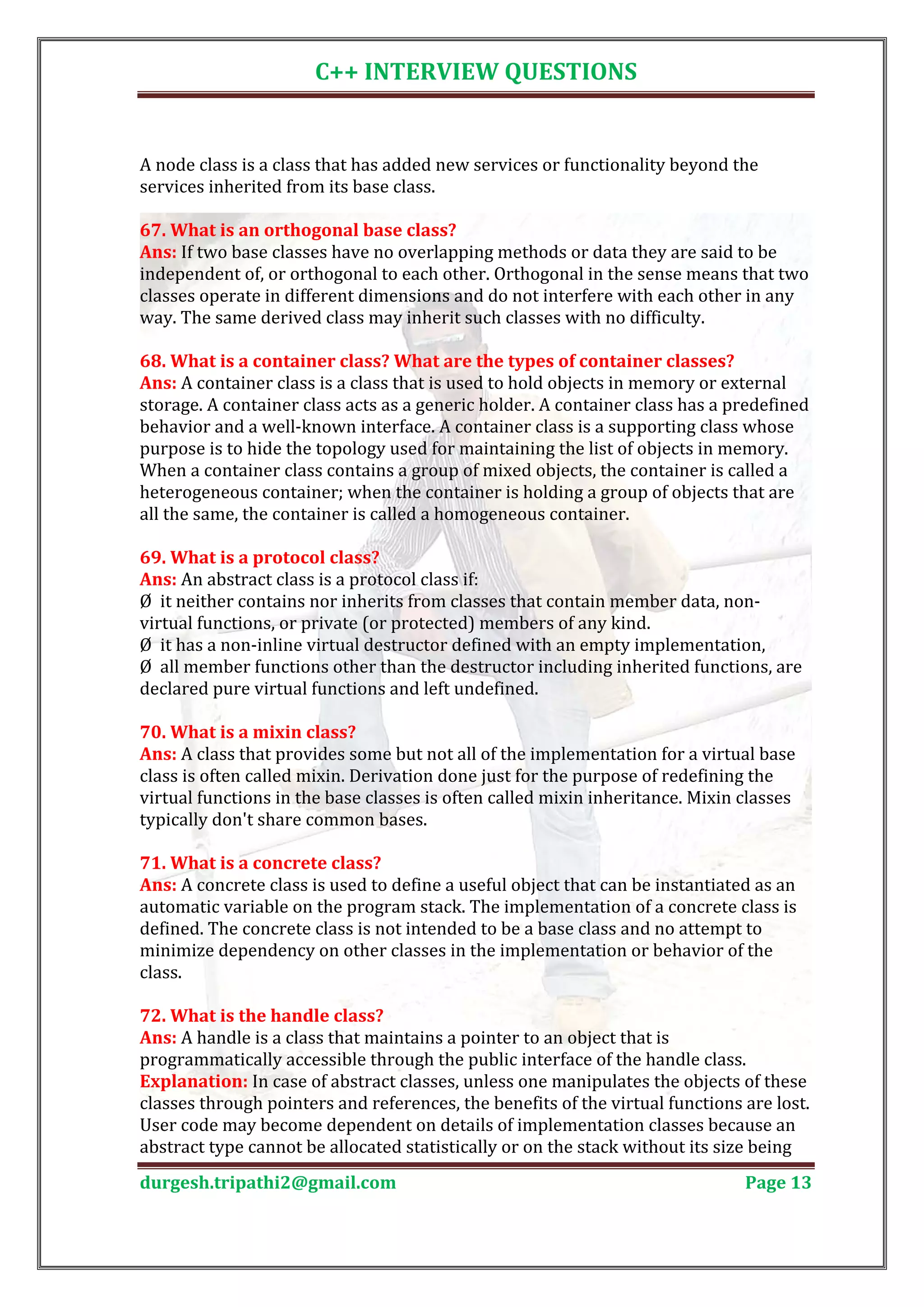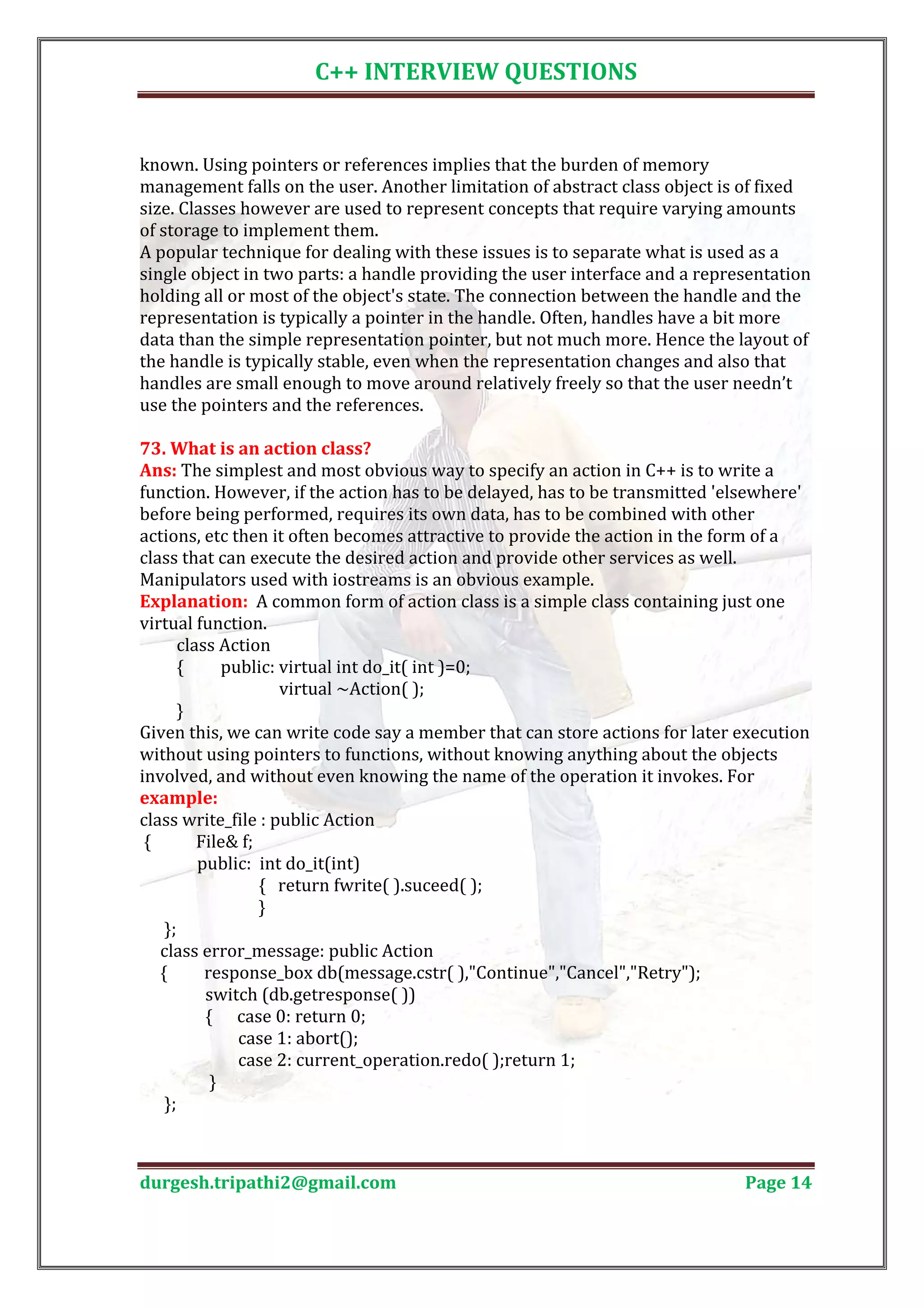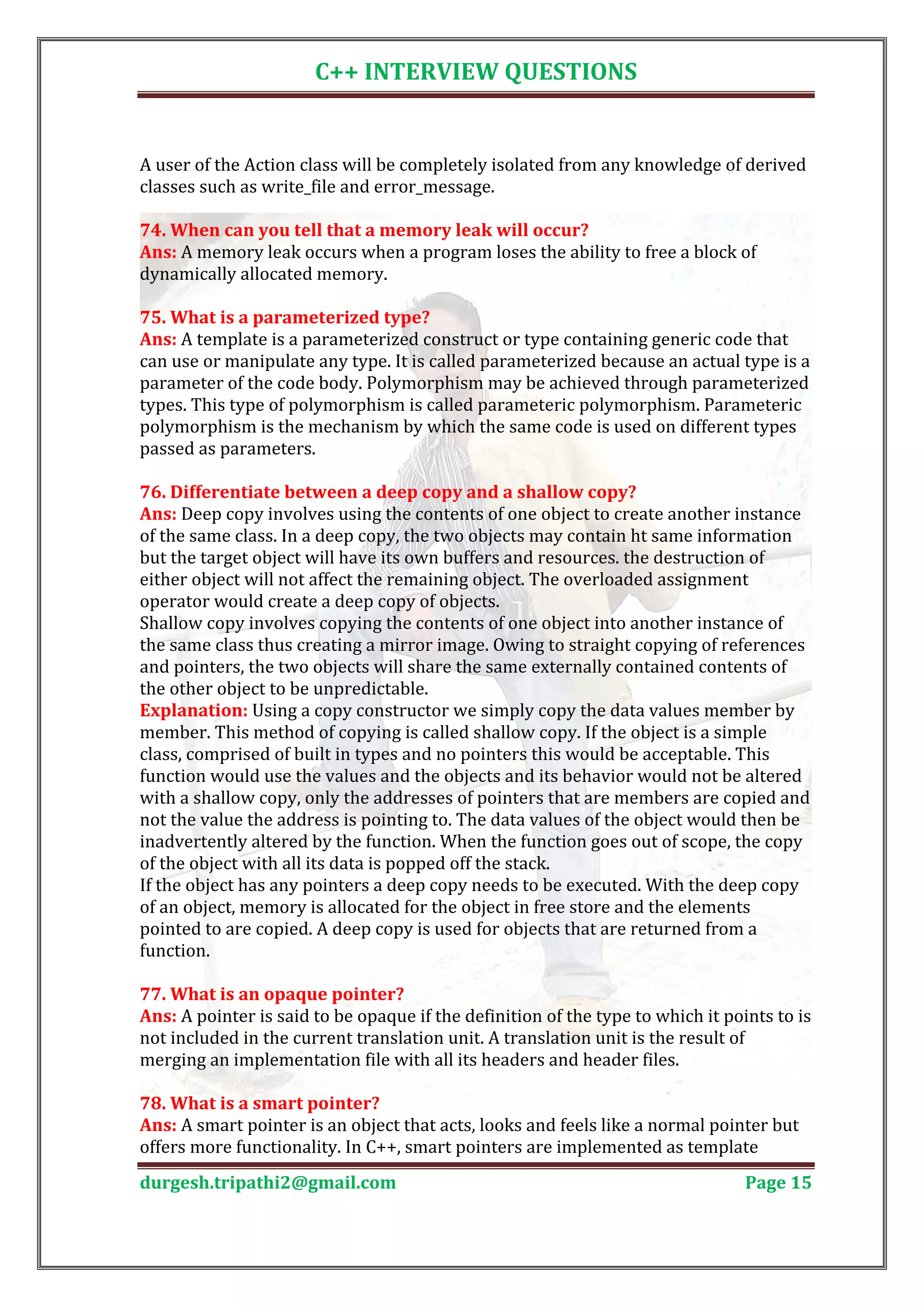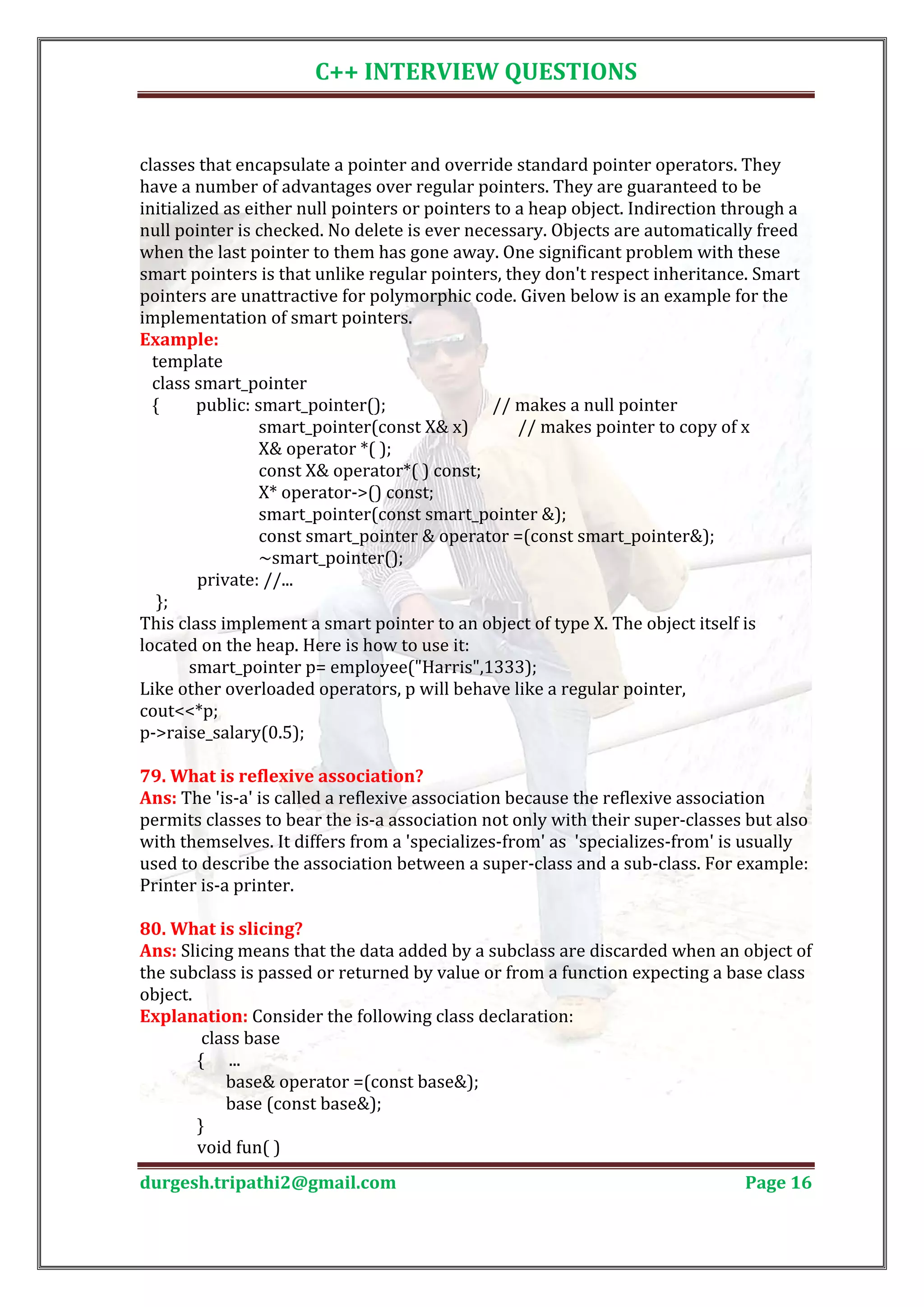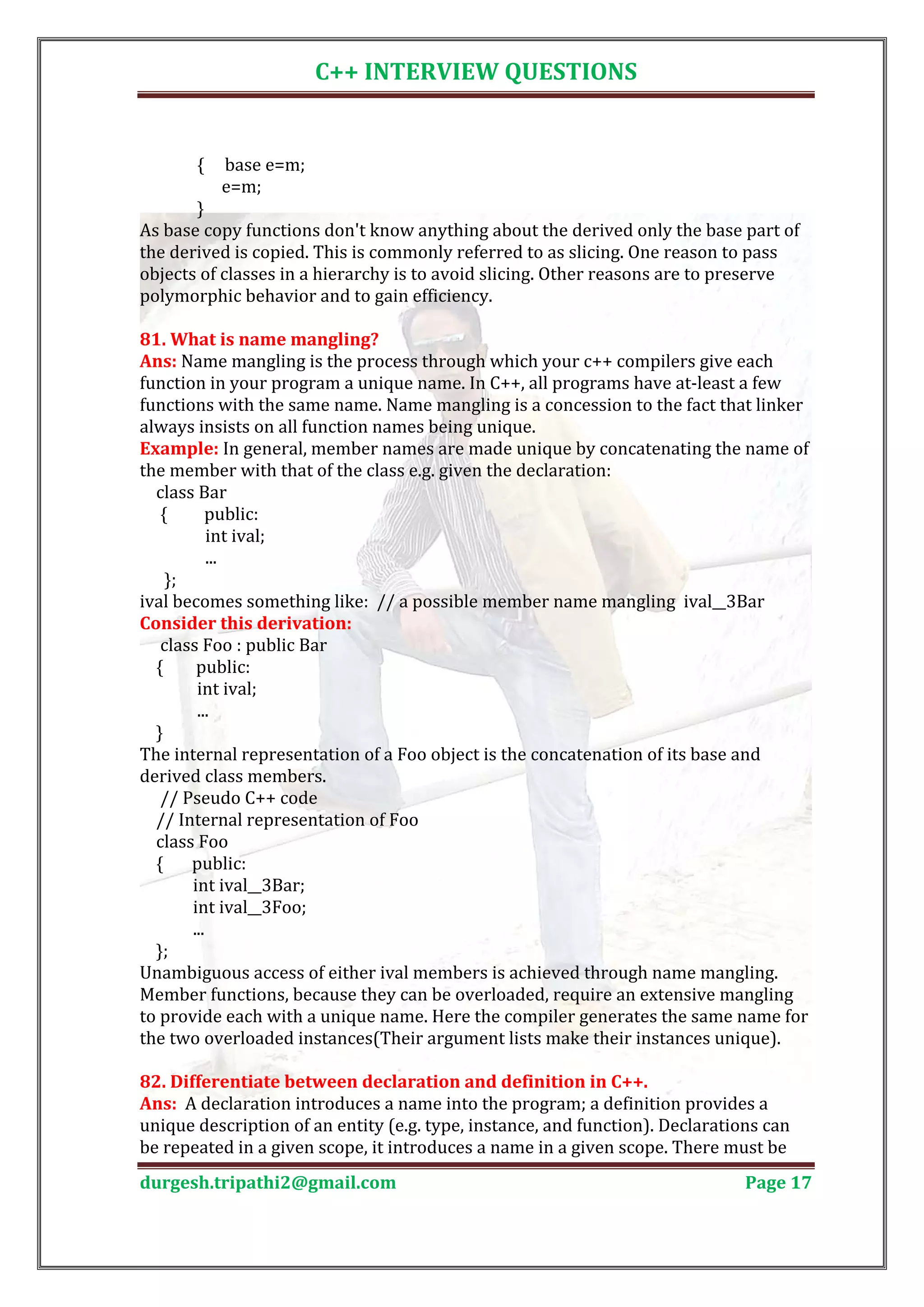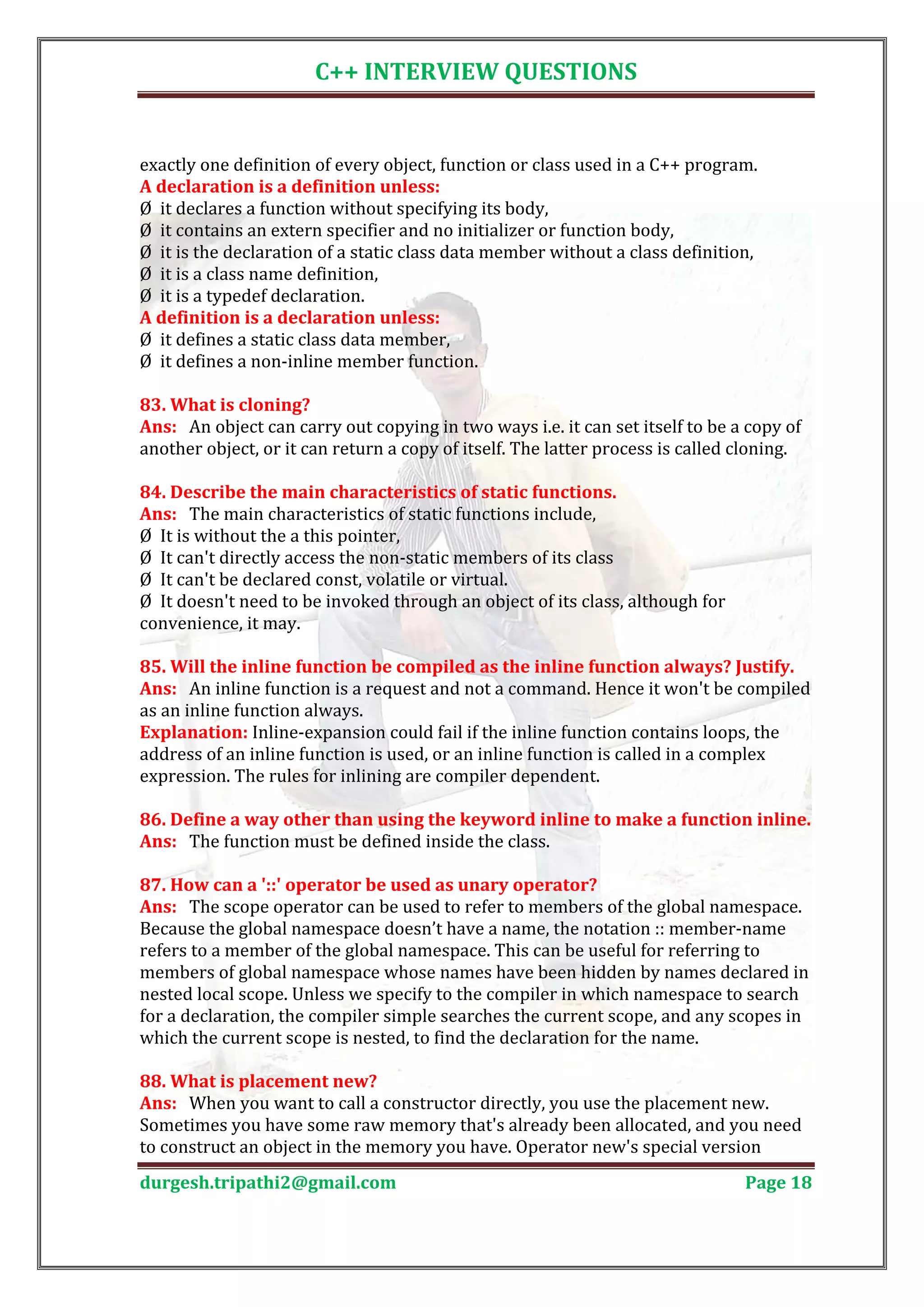C++ provides classes as templates to define common data structures and algorithms. Classes like vector and list define containers that store and retrieve objects through iterators. Iterators allow traversing container elements without knowing details of the underlying data structure. The Standard Template Library contains many useful container and algorithm classes that take advantage of templates and iterators to provide powerful and flexible generic programming capabilities in C++.
![C++ INTERVIEW QUESTIONS C++ INTERVIEW QUESTION Ans: The objects with the same data structure (attributes) and 1. What is a class? behaviour(operations) are called class. Ans: It is an entity which may correspond to real-world entities such as students, 2. What is an object? employees, bank account. It may be concrete such as file system or conceptual such as scheduling policies in multiprocessor operating system. Every object will have data structures called attributes and behavior called operations. Ans: All objects possessing similar properties are grouped into class. Eg –person is a 3. What is the difference between an object and a class? class,ram,hari are objects of person class . All have similar attributes like name, age, sex and similar operations like speak, walk. Class person { private: char name[20]; int age; char sex; public: speak(); walk(); }; Ans: In class the data members by default are private but in structure they are by 4. What is the difference between class and structure? default public Ans: Object based programming language support encapsulation and object identity 5. Define object based programming language ? without supporting some important features of OOPs language.eg-ada. Object based language=Encapsulation + object Identity Ans: Object-oriented language incorporates all the features of object based 6. Define object oriented language ? programming languages along with inherentance and polymorphism.eg-c++,java. Ans: OOP is a method of implementation in which programs are organized as co- 7. Define OOPs? operative collection of objects,each of which represents an instance of some class durgesh.tripathi2@gmail.com Page 1](https://image.slidesharecdn.com/cinterviewquestion-120508015113-phpapp02/75/C-interview-question-1-2048.jpg)
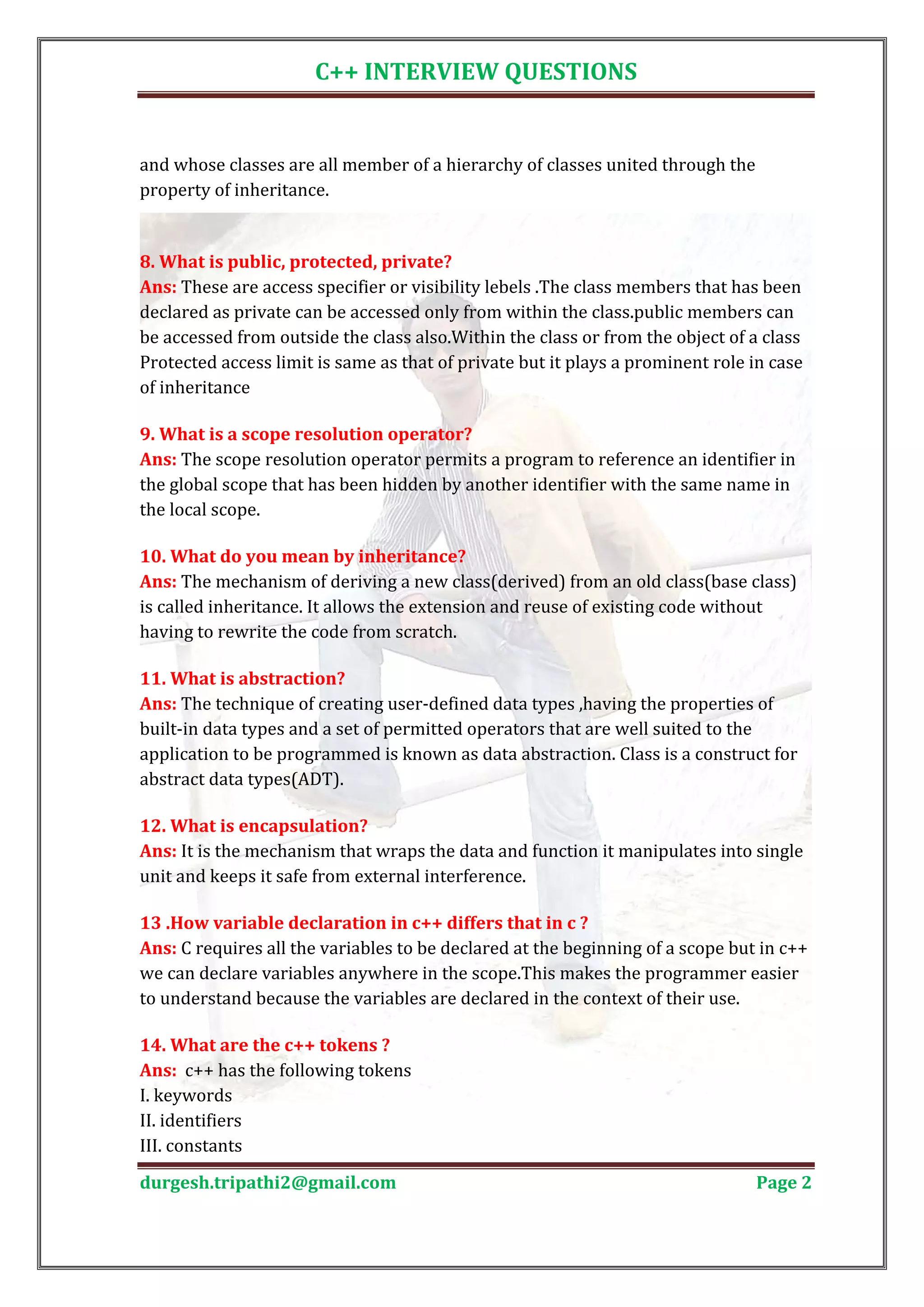
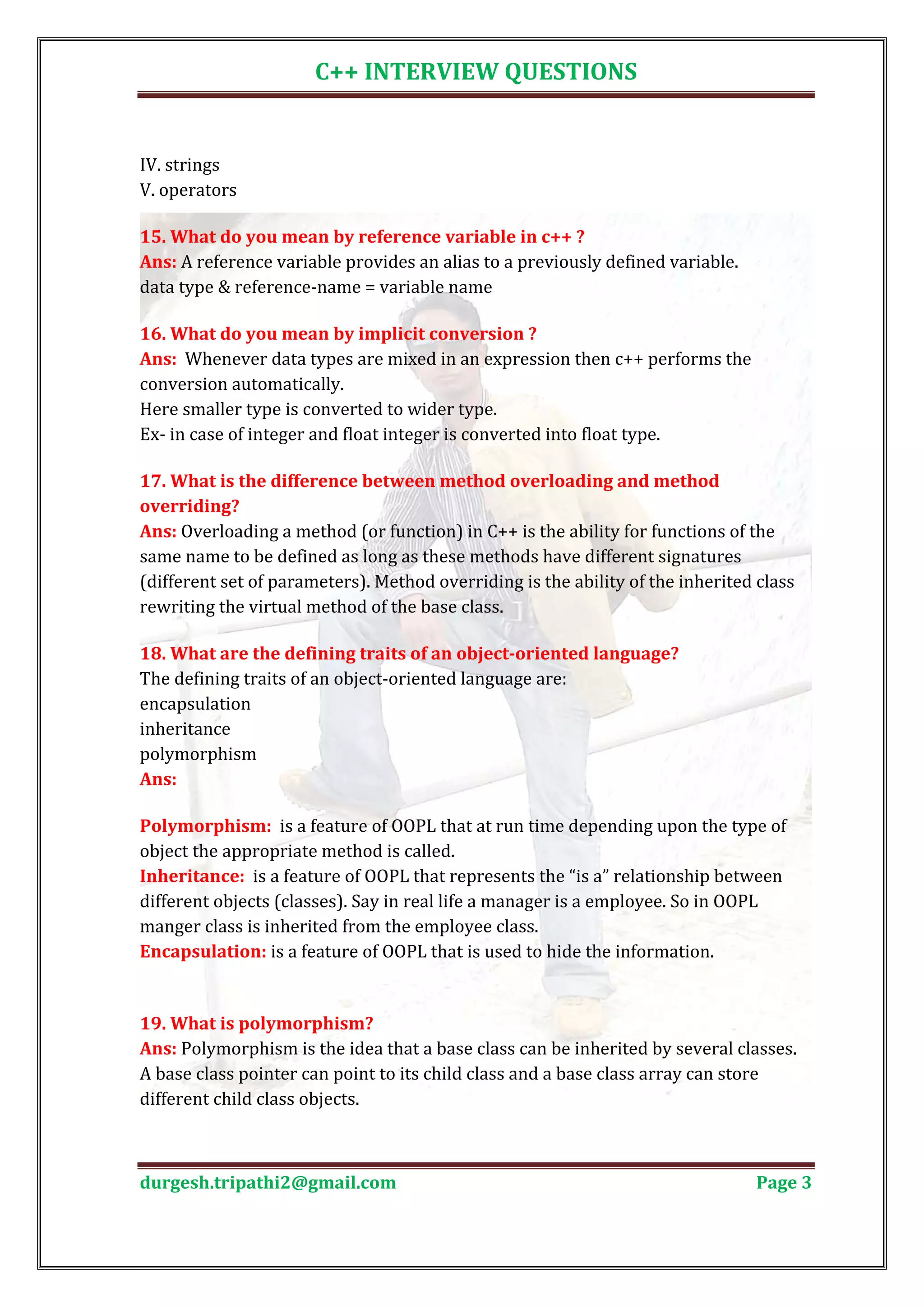
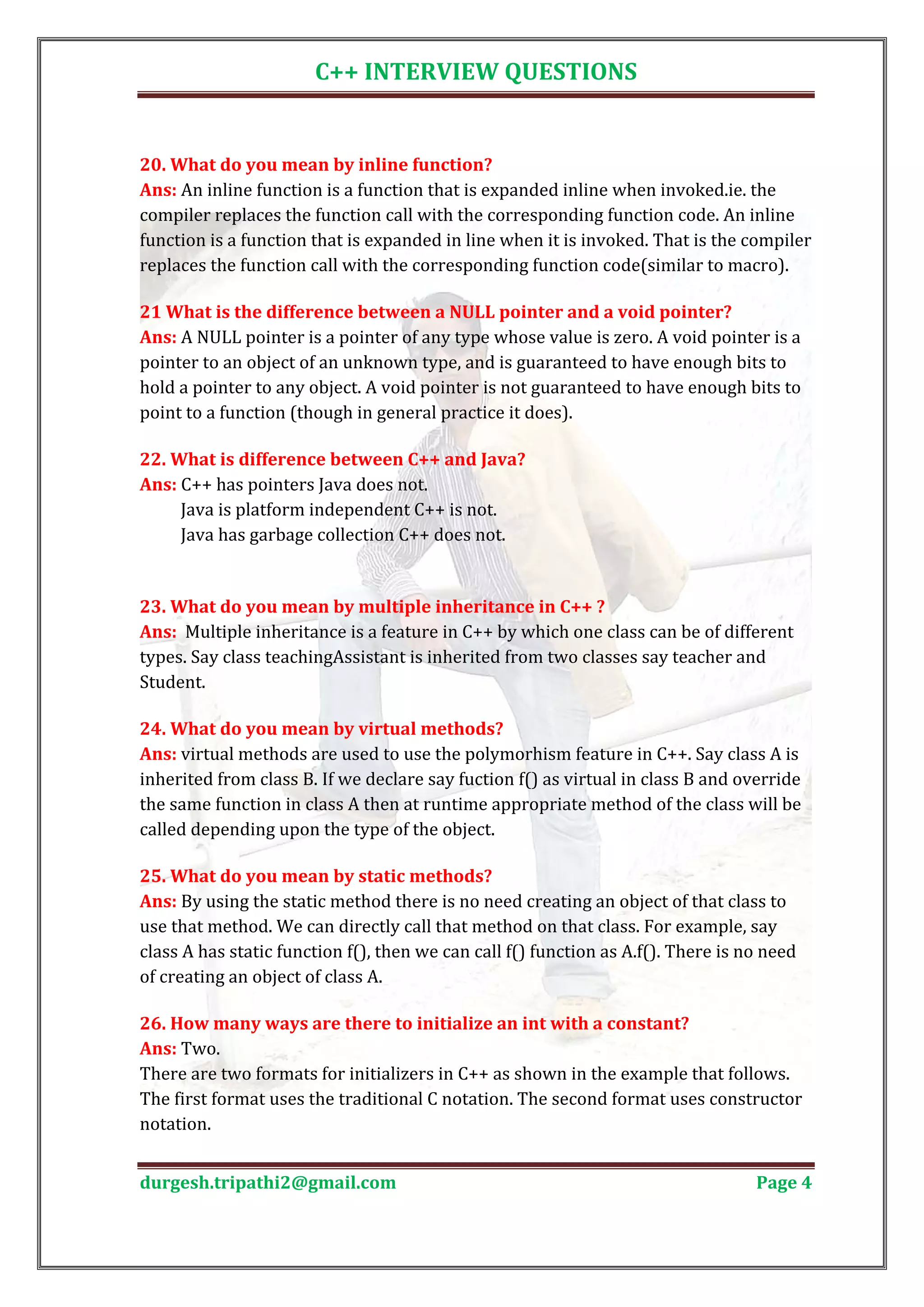
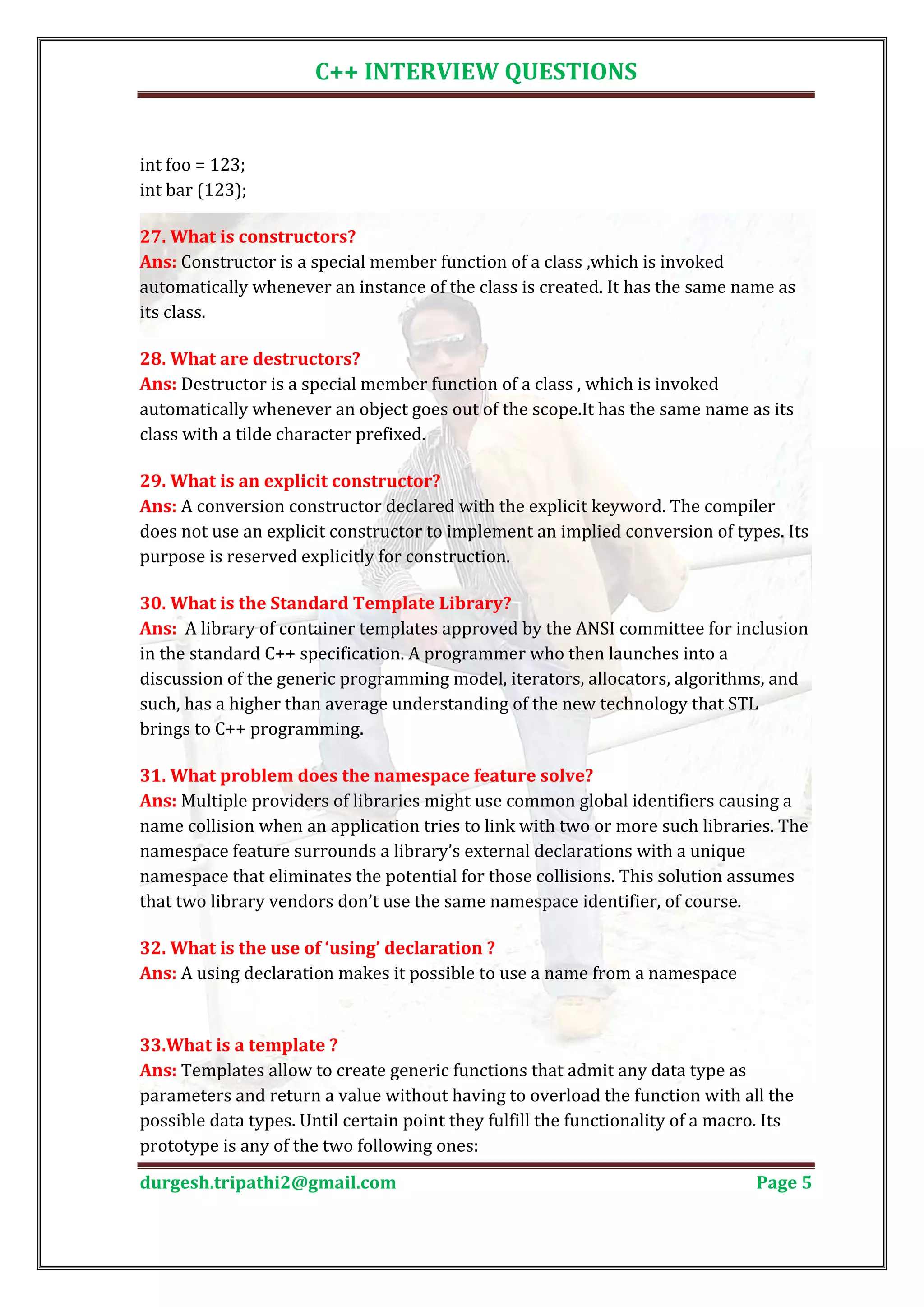
![C++ INTERVIEW QUESTIONS template function_declaration; template function_declaration; 34. Differentiate between a template class and class template ? Template class: A generic definition or a parameterized class not instantiated until Ans: the client provides the needed information. It’s jargon for plain templates. Class template: A class template specifies how individual classes can be constructed much like the way a class specifies how individual objects can be constructed. It’s jargon for plain classes. 35. What is the difference between a copy constructor and an overloaded Ans: A copy constructor constructs a new object by using the content of the assignment operator? argument object. An overloaded assignment operator assigns the contents of an existing object to another existing object of the same class. Ans: The simple answer is that a virtual destructor is one that is declared with the 36. What is a virtual destructor? virtual attribute. Ans: Incomplete types refers to pointers in which there is non availability of the 37. What is an incomplete type? implementation of the referenced location or it points to some location whose value is not available for modification. int *i=0×400 // i points to address 400 Example: *i=0; //set the value of memory location pointed by i. Incomplete types are otherwise called uninitialized pointers. Ans: It is a process during exception handling when the destructor is called for all 38. [imp] What do you mean by Stack unwinding? local objects between the place where the exception was thrown and where it is caught. Ans: A container class is a class that is used to hold objects in memory or external 39. What is a container class? What are the types of container classes? storage. A container class acts as a generic holder. A container class has a predefined behavior and a well-known interface. A container class is a supporting class whose purpose is to hide the topology used for maintaining the list of objects in memory. When a container class contains a group of mixed objects, the container is called a durgesh.tripathi2@gmail.com Page 6](https://image.slidesharecdn.com/cinterviewquestion-120508015113-phpapp02/75/C-interview-question-6-2048.jpg)
![C++ INTERVIEW QUESTIONS heterogeneous container; when the container is holding a group of objects that are all the same, the container is called a homogeneous container Ans: Smalltalk, Java, Eiffel, Sather. 40. Name some pure object oriented languages ? Ans: sizeof, ., .*, .->, ::, ?: 41. Name the operators that cannot be overloaded ? Ans: A class that has no functionality of its own. Its member functions hide the use of 42. What is an adaptor class or Wrapper class? a third party software component or an object with the non-compatible interface or a non-object-oriented implementation. Ans: It is an object of some class whose purpose is to indicate that a real object of 43. What is a Null object? that class does not exist. One common use for a null object is a return value from a member function that is supposed to return an object with some specified properties but cannot find such an object. Ans: A class invariant is a condition that defines all valid states for an object. It is a 44. [imp] What is class invariant? logical condition to ensure the correct working of a class. Class invariants must hold when an object is created, and they must be preserved under all operations of the class. In particular all class invariants are both preconditions and post-conditions for all operations or member functions of the class. Ans: A dangling pointer arises when you use the address of an object after its 45. What is a dangling pointer? lifetime is over. This may occur in situations like returning addresses of the automatic variables from a function or using the address of the memory block after it is freed. Example: The following code snippet shows this: class Sample { public: int *ptr; Sample(int i) { ptr = new int(i); } ~Sample() { delete ptr; durgesh.tripathi2@gmail.com Page 7](https://image.slidesharecdn.com/cinterviewquestion-120508015113-phpapp02/75/C-interview-question-7-2048.jpg)
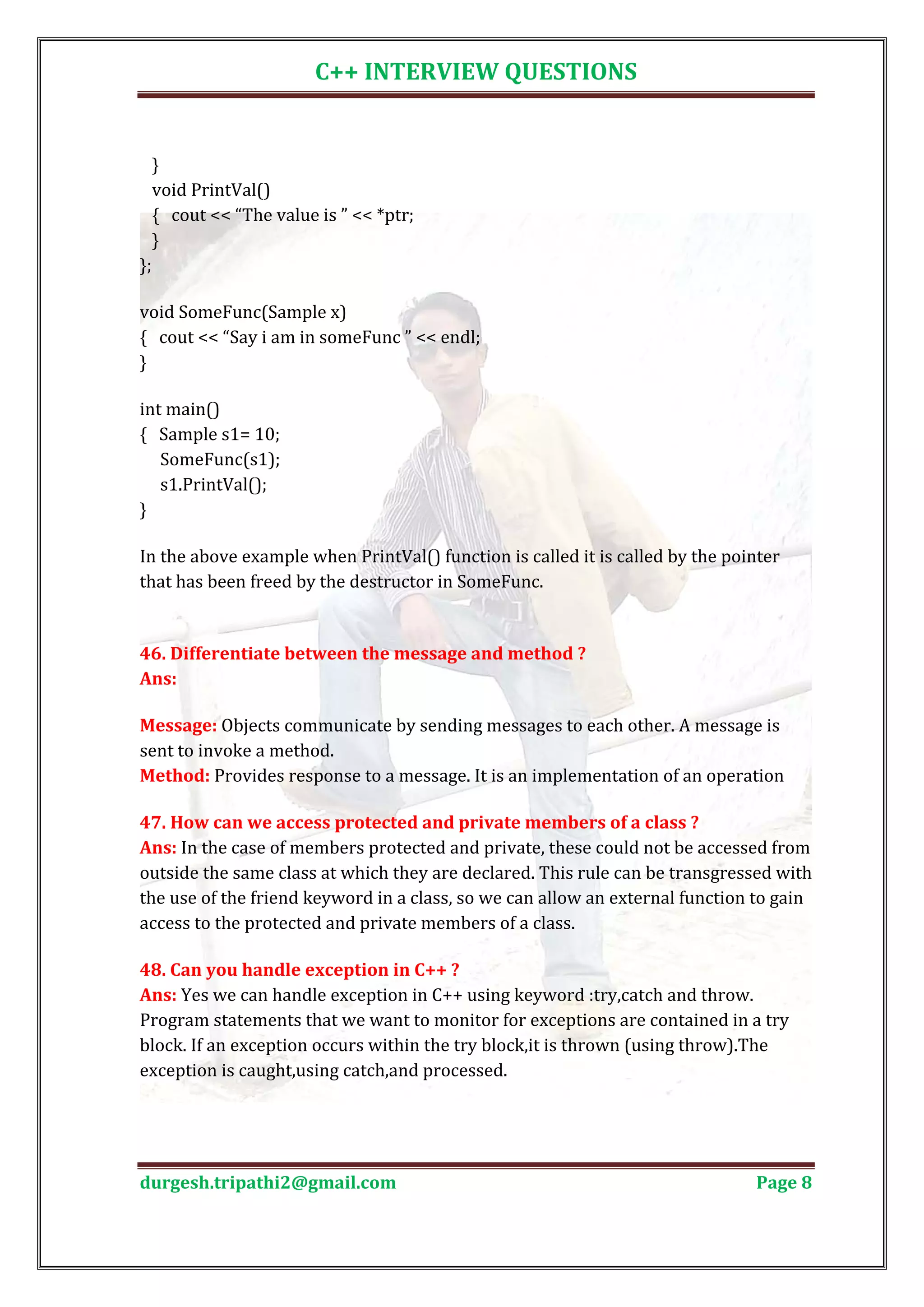
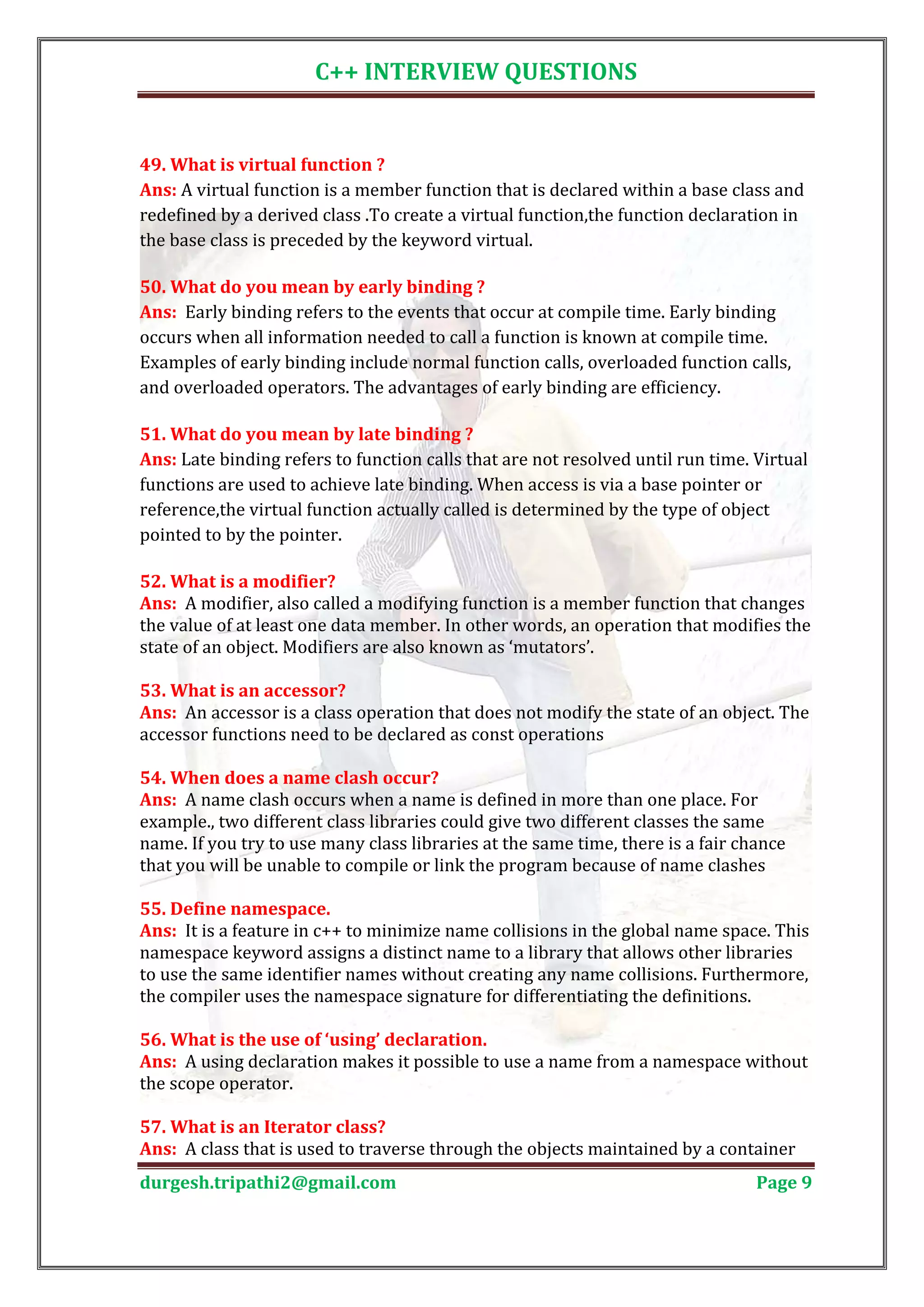
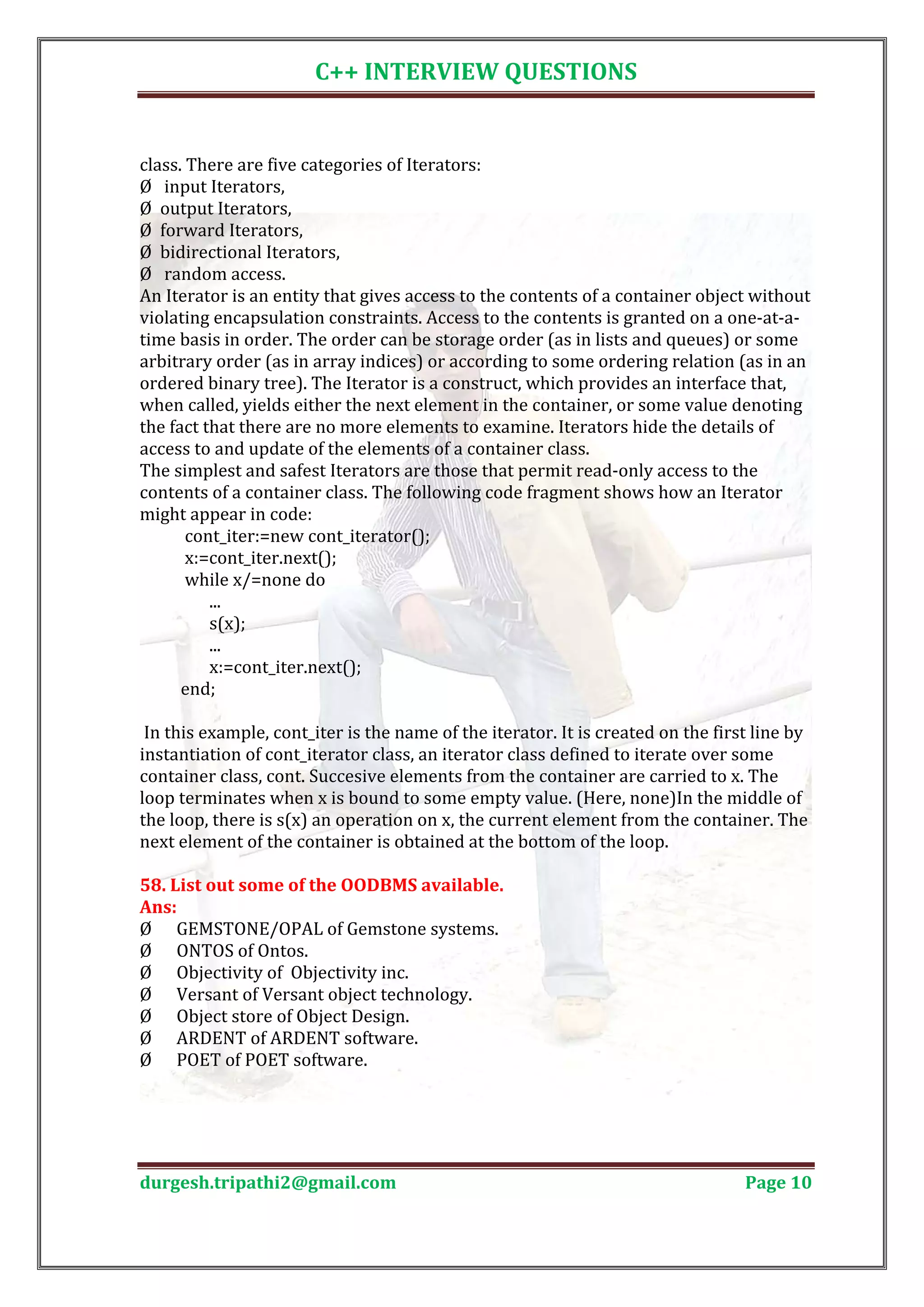
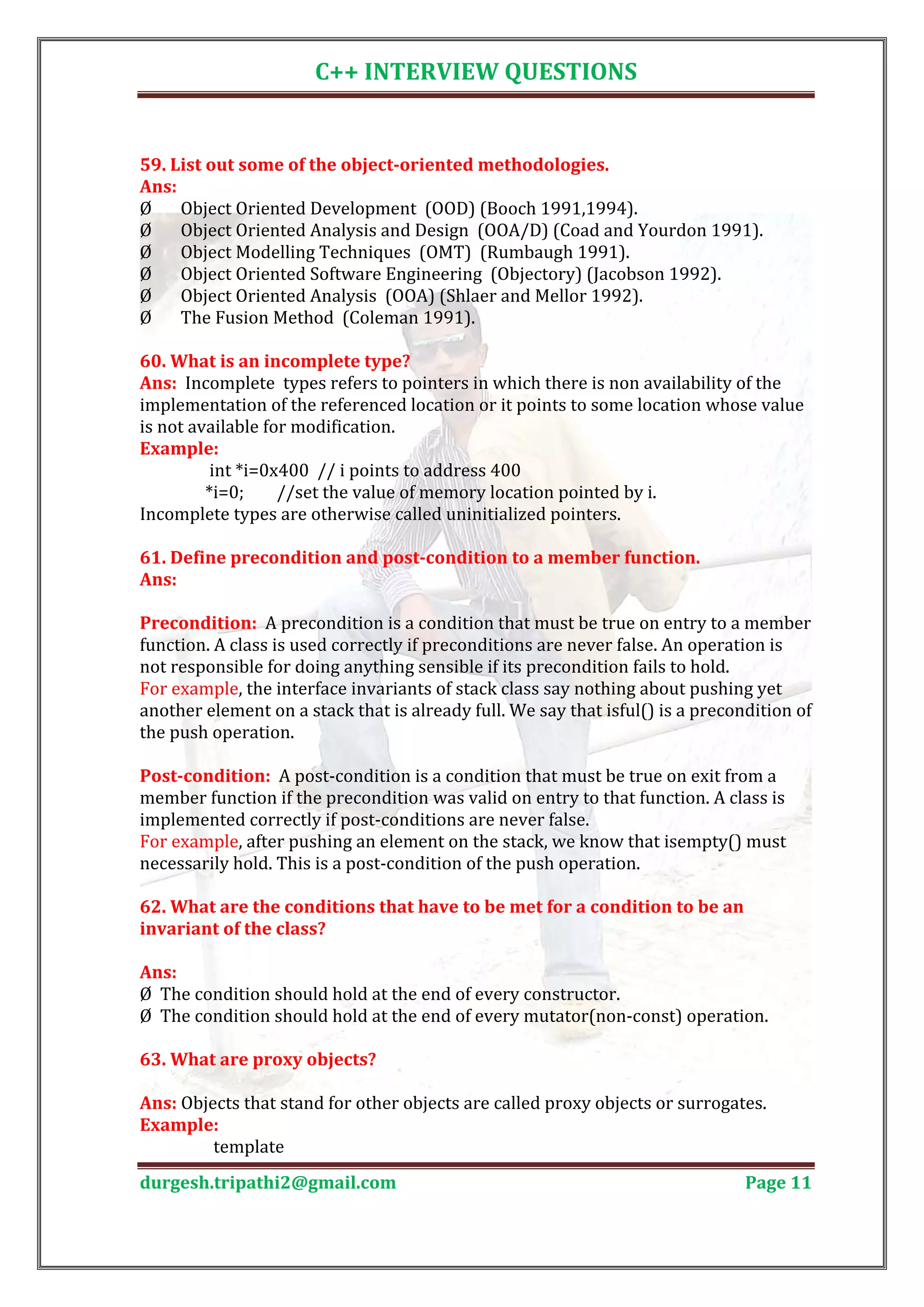
![C++ INTERVIEW QUESTIONS class Array2D { public: class Array1D { public: T& operator[] (int index); const T& operator[] (int index) const; ... }; Array1D operator[] (int index); const Array1D operator[] (int index) const; ... }; The following then becomes legal: Array2Ddata(10,20); ........ cout< Here data[3] yields an Array1D object and the operator [] invocation on that object yields the float in position(3,6) of the original two dimensional array. Clients of the Array2D class need not be aware of the presence of the Array1D class. Objects of this latter class stand for one-dimensional array objects that, conceptually, do not exist for clients of Array2D. Such clients program as if they were using real, live, two- dimensional arrays. Each Array1D object stands for a one-dimensional array that is absent from a conceptual model used by the clients of Array2D. In the above example, Array1D is a proxy class. Its instances stand for one-dimensional arrays that, conceptually, do not exist. 64. Name some pure object oriented languages. Ø Smalltalk, Ans: Ø Java, Ø Eiffel, Ø Sather. Ans: sizeof . .* .-> :: ?: 65. Name the operators that cannot be overloaded. Ans: A node class is a class that, 66. What is a node class? Ø relies on the base class for services and implementation, Ø provides a wider interface to te users than its base class, Ø relies primarily on virtual functions in its public interface Ø depends on all its direct and indirect base class Ø can be understood only in the context of the base class Ø can be used as base for further derivation Ø can be used to create objects. durgesh.tripathi2@gmail.com Page 12](https://image.slidesharecdn.com/cinterviewquestion-120508015113-phpapp02/75/C-interview-question-12-2048.jpg)
